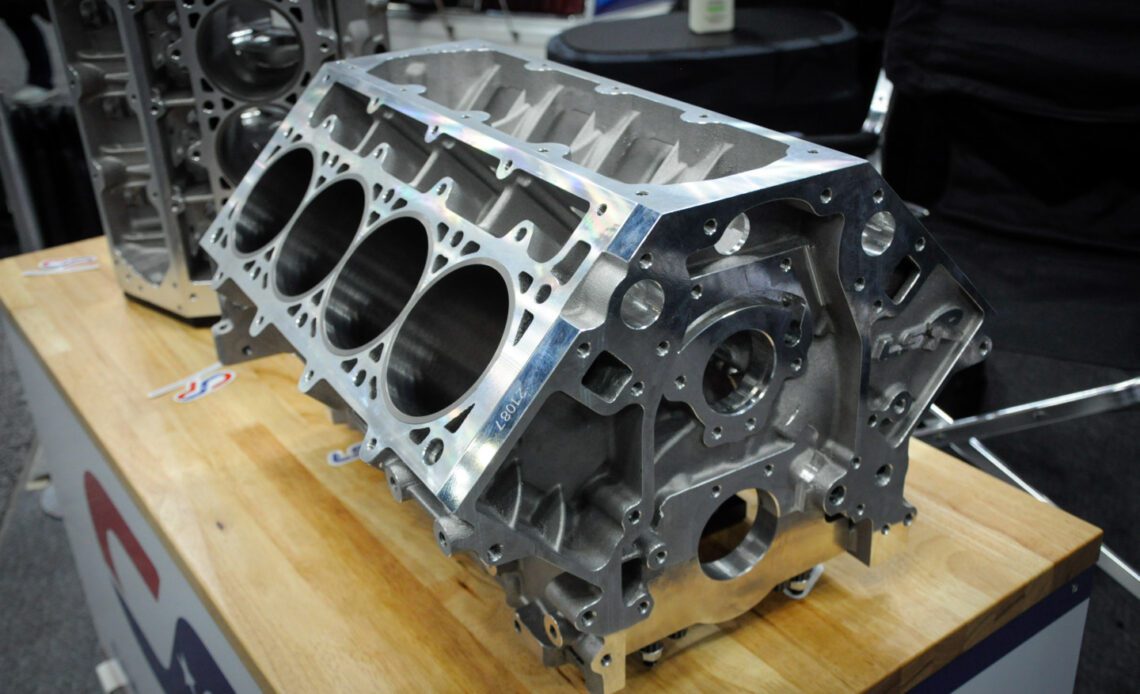The start of any high-performance LS engine build usually starts with a choice between an iron or aluminum foundation.
Conventionally, iron blocks have been the favorite for big boost, four-figure horsepower engines used in straight-line spaces. This is mostly due to iron’s superior strength and its ability to resist flexing or distorting under high cylinder pressures. It’s also cheap. Meanwhile, lighter aluminum blocks often find favor in high-RPM naturally aspirated road racing applications or mildly boosted builds where the engine isn’t living on a knife-edge. Not counting billet blocks, of course.
LSR Block From Concept Performance
Enter Concept Performance and its all-aluminum LSR block. The company exploded onto the scene a few years back with the first-gen LSR, but its parent company, Ewing Light Metals, has long been serving go-fast-geeks as a private label manufacturer for several big-name brands. The aftermarket LSR block takes the design advancements of Chevrolet’s venerable LSX race block and offers it in a much lighter cast-aluminum package.
The LSR block is cast at the company’s foundry in Indianapolis, Indiana, from A356 T6 aluminum ingot and features spun ductile iron sleeves from Ohio-based PowerBore Cylinder Sleeves. The LSR is available with a standard deck height of 9.240 inches, or an optional 9.720-inch-tall deck. Both decks have a thickness of .750-inches. The tall-deck version offers a raised cam option and the cam bores of either deck height can be machined to accept 60mm roller bearings.
Most of these blocks are ending up in Corvettes, Late Model Engines (LME) is our largest LS customer and they’re working mostly with Corvettes. – Carlos Inocencio
“This block has now been out for about four or five years and we’ve gone through several generations starting with a LSX-style version that had almost no extra beefing up,” says company principal Carlos Inocencio. “Originally, the LSR was literally a replication of an LSX. Now the current version of our block is almost like a Gen-V block in terms of strength.”
When Chevrolet launched the iron LSX block in 2006 its bones were derived from the production design of the aluminum LS7 developed for the C6 Corvette Z06. Geared towards heavy-duty competitive use, design changes were made to increase the block’s strength and reliability when spinning at high RPM and swallowing big boost. Priority…
Click Here to Read the Full Original Article at DragzineDragzine…

